- Home
- Alistair Moffat
The Secret History of Here Page 5
The Secret History of Here Read online
Page 5
16 January
A pale dawn edges across the land and the ewes in the grass park are lying down in a tight pack, perhaps expecting rain. There is a smirr on the breeze at Windy Gates. Some mornings I look out to the east and think of Lindisfarne, the Holy Island of Cuthbert, Aidan and the saints who made the glorious gospels. I spent some time there last autumn, but I would find winter difficult on the shores of the cold North Sea, even more so in the long past. When the winds whipped across the little island, the old monks shivered in their cells, warmed only by the fierce fire of their faith and the certainty of God’s undying love.
Few modern Christians would suffer so much in a ceaseless quest for eternal life, for the keys of the kingdom of Heaven, but at least we have some understanding of their beliefs and how they saw Creation. What those who hunted the Wildwood and fished the Hartwood Loch believed, if anything, is much more difficult to know. Only gossamer wisps hint at their spirituality. They carved little anthropomorphic figurines that might have been used as fertility amulets. Or perhaps they were talismans for women who hoped for easy, uncomplicated birthing. And at the end of their short lives, later communities of hunter-gatherers buried bodies smeared with red ochre, perhaps to signify blood. The clay from the Tile Field, and our fields, is red.
Long before they came north to what is now Scotland, our ancestors created cathedrals to a forgotten religion. In the Ice Age refuges on either side of the Pyrenees thirty thousand years ago, they began to use the colours of ochre to paint. At Lascaux, Chauvet and Altamira in Spain, and scores of other caves, they painted herds of galloping wild horses, a charge of the huge wild cattle called aurochs, lions, bison and many of the other fauna of the millennia of ice. Often in deep darkness lit only by fires and pine resin torches our ancestors brought to life an astonishingly beautiful menagerie of what they saw out in the frozen landscape and when the spring migrations at last began.
Why did they do this? No practical purposes suggest themselves. This celebration, perhaps veneration of the natural world seems to have had a purely spiritual meaning. The Native Americans of the Great Plains revered the buffalo, the animal their culture depended on, by dancing in imitation of the great beasts. It may be that the painted caves were indeed temples where ceremonies were enacted as fires flickered and the shadows of the hunters danced on the walls where the aurochs thundered and the wild horses stampeded. Perhaps they danced to bring them back each spring, as the animals migrated to the summer grasslands.
If our ancestors did worship the natural world upon which they depended, then perhaps we should learn from them. The climate is changing quickly as a direct result of our actions, and we need to retrieve some of their ancient reverence.
17 January
There is an elemental purity in the penetrating chill of a deep winter wind. Out in the open, no sheltering trees blunt its icy edge and it is essential to keep moving, to plunge hands into pockets to keep fingers flexible. I am in the wrack of the Top Wood, cutting logs before the weather begins to shut down. My supply is dwindling fast as I fill and refill two woodburners to keep the farmhouse snug. After a struggle with the ripcord and the choke flooding the carburetor, the chainsaw at last rips into action. Such a dangerous machine, but it works so fast and cleanly. Half an hour, one fill of the small fuel tank, and I will have enough for two weeks.
The snow is coming. Even though the morning sky is clear, the wind has backed to the north-west and forecasters are predicting falls over high ground. At six hundred feet, we are on the margin. In winters past, I have seen a light dusting on the hill of the Deer Park and nothing down at the farmhouse.
18 January
The field is fringed with one of the few scraps of old woodland in our valley. As I walked down the Long Track, peering through the early dark, I heard whispers of stories from the long past.
Near the stand of birches and alders, the Mason brothers found a trace of prehistory that expanded the horizons of our little valley far beyond the western hills and exploded the notion of an isolated, primitive community. The hunter-gatherer band that fished the Hartwood Loch and stalked the deer in the Wildwood knew of a world far beyond their familiar ranges. In rough ground ploughed around the old trees for the planting of yet more sitka spruce, the sharp-eyed Masons found a small object with a dark lustre sitting on top of the fresh furrows. It was a beautifully knapped flint arrowhead made in the shape of a small leaf, its faceted edges still razor-sharp. But it was the distinctive nature of this flint that made the find so eloquent.
It had been very skilfully fashioned from a hard, igneous stone known as porcellanite and that particular kind is found only in one place. Across the North Channel in the beautiful Antrim Glens of Ulster rises a mountain whose name remembers an ancient craft. Taobh Builleach is the mountain of blows, or strikes, the quarry mountain. Roughed-out nodules of porcellanite were hacked out of its side (an taobh) and exported all over Britain in the centuries after 5000 BC. Axe-heads were knapped to fine edges and many arrowheads made lethal by the stone-working skills of our ancestors.
So much porcellanite was hacked out of the outcrop in the Antrim Glens that there must have been an organised distribution network, places where travellers arrived with flint that they could barter for other valuables. The arrowhead found by the Masons on the far, southern side of Hartwood Loch had probably passed through several pairs of hands before it was hefted to the straight shaft of an arrow. What this find speaks of is regular contact, the exchange of news, a mutual language, social links and an understanding of a much wider world. A prehistoric economy was functioning in our little valley.
What also drove small family bands to be in touch with others were some fundamental needs. As early as twelve or thirteen, children had to find marriage partners so that they could begin their own band, and that meant contact with a widening circle of neighbours and perhaps sufficiently distant relatives, the further flung the better.
19 January
The snow is teasing us, toying with us. There was a sugar dusting last night and some ice had formed by morning. It is a grey, cloud-filled day but not, I think, cold enough to snow. I think.
When I drove down the Long Track, I passed a metal detectorist. I hope he finds something and I hope we find out about it if he does. I was on my way to see another old friend, someone who might have been able to advise him.
In a comfortable cafe attached to a shop stocked by one of Scotland’s foremost weavers of tartan, surrounded by the chatter of friends exchanging news and elegant displays of kilts, plaids, Royal Stewart tartan scarves, shawls, dirks and Argyll socks, Walter Elliot made me a gift of my history. Out of a supermarket plastic bag he brought treasure that had lain buried and hidden under the fields of our farm for thousands of years. When the grass parks on the northern banks of the Hartwood Loch had been ploughed, and rain had washed the crests of the furrows, Bruce and Walter Mason had gone fieldwalking. Hoping the slanting spring sun would catch an object of ancient lustre, they picked up fragments of startling beauty. The Masons had given these to Walter Elliot, and in an act of extraordinary generosity he gave them to me. ‘I’m in my eighties now and I need to pass things on to people who know what they are.’
The bustle of the cafe seemed to still as Walter took out an old, clear plastic bag full of flint tools that had been worked and made by people who lived where our farm is around six thousand years ago. From the unpromising debris, he pushed out two exquisitely made arrowheads, not much larger than a five-pence piece, that had been knapped with a deadly delicacy to razor-sharpness. One was leaf-shaped and the patient, perfectly weighted blows with a knapstone could still be made out. The other was tanged, formed like a tiny Christmas tree with a thick trunk. Both arrowheads had been fired, for each had traces of the birch bark resin that had fixed them to their wooden shafts. Perhaps the bowmen missed their targets and lost them in the tangle of the Wildwood.
Walter brought out two sharp edges that had been used like knives to skin
an animal, a beautifully made scraper for removing the fat from the inside of pelts, and about forty microliths that had been set into arrow shafts to prevent them falling out once they had pierced the flank of a prey animal. This would make it more likely that it would bleed to death from the wound as it ran. Found on a farm about a mile to the east, there was a heavy hammerstone. About the size of a large potato, it had been knapped so that a thumb fitted into an indentation on one side and fingers on the other. There were clear signs of wear on its surface.
Perhaps most startling were the relics of prehistoric manufacturing. The Masons had picked up two stone spindle whorls in our fields. Like small doughnuts, they were almost perfectly round, with holes bored through the centre. When making yarn for weaving, women attached the whorls as a weight to the bottom of their spindle sticks so that they would spin faster and more steadily as they formed strands of yarn with their fingers from skeins of wool. The slightly smaller one shows how the hole was bored with a bow drill, a bit of harder stone made to grind as someone spun it, so that it turned quickly as they sawed back and forth with an instrument like a bow for a violin. Remarkably, the other whorl had been decorated. Someone had scored straight lines radiating from the central hole so that they looked like the rays of the sun. Not only weapons and objects used in manufacture had been made on our farm six thousand years ago, art had been produced too.
Handling all of these objects on my desk as I write this is extraordinary, moving. I feel tears prickle at the thought and the tangible evidence of all that experience in one place, a sense of closeness to these people, in space if not in time. And I am grateful beyond words to Walter for passing on these finds. He knew his gift would make the deep past of this place come alive for me.
I have long thought of history as something personal, not remote or abstract but as events and processes that happened to people like me, to anyone. Much more than the procession of kings, queens, generals and armies through the landscape, history should be about attempting to understand something of the lives of those uncounted and unnamed generations who lived under these big skies before us, how they saw the world, what they believed, hoped for and feared.
This collection of objects suddenly made the story of this place even more intimate. I could imagine a hunter preparing his equipment, sitting in the bright sunshine by the loch so that he could see better the detail of what he was doing, knapping gently at flint flakes to make his delicate arrowhead, tutting with exasperation as one splintered, throwing it aside, holding another up to the light to assess the symmetry, its natural shape, how it would flake. On another bright day, perhaps minding her children, walking with them around the hurdle fences of their little fields, a mother spun her spindle to make the yarn for her family’s woollen clothes. And then the whorl was lost, the arrow with the leaf-shaped head fired and never retrieved. They lay hidden in the earth for many millennia, waiting for Walter and Bruce Mason to find them, and through them remember those lost and forgotten lives.
I am amazed at the series of unlikely coincidences that concluded with Walter Elliot’s thoughtful kindness that brought the scrapers, knives, arrowheads and whorls back where they belong.
When my family and I first came up the Long Track to the ruined cottage and the acre of land around it that would grow into our farm, we felt an intense sense that this place had atmosphere, had history. Hidden beneath the tumbledown walls and the tangle of willowherb choking the garden were stories, perhaps even spirits, the ghosts of an immense past. That is no exaggeration. The summer after we had bought the roofless old cottage and its ruined stables, we often drove down from Edinburgh on a sunny Sunday just to be here. And when the time came to return to the city, we started the car reluctantly. Swirling around the whinstone walls was a powerful sense of belonging, of having come home. From Walter’s gift, I now know that at least three hundred generations had called our farm home, and since then they have whispered their stories to whomever stops to listen.
20 January
Morning mist shrinks the world dramatically. I can see no further than a radius of fifty feet but out of the echoing mirk come the sounds of activity. My neighbour clatters about the steading, feeding his cows, who trumpet their appreciation of the sweet, steaming silage. Like a squadron of miniature Battle of Britain spitfires flying out of the clouds, a flock of cawing crows suddenly appears and disappears, and invisible in the grass park a ewe coughs.
At Windy Gates stands the spirit of defiant renewal. In a grey, brittle stump that survived from the hardwoods that predated the planting of sitka in 1950, a Scots pine seedling has grown. Somehow its roots have threaded their way down through the dead wood to find the earth and some moisture and sustenance. Now three feet tall, its existence is testament to life and how it finds a way. Perhaps deep in the old stump there is a memory of all its long life of spring leaves and summers past before the sawyers came nearly seventy years ago.
21 January
Last night’s full moon, what is known in January as a wolf moon, shone so brightly that it eclipsed all of the stars in the southern sky and lit the land so clearly that deep moon shadows were cast. They were the darkest places in a landscape of many shades of grey. Five hundred years ago it was also the landscape of larceny. Bands of horse-riding bandits known as Border Reivers raided cattle on clear nights like this. In winter, all of a farmer’s cows were herded off the hills and corralled in the inbye fields around the steading so that they could be fed. That made them much easier to steal, and when there was a full moon the reivers’ ponies – surefooted, shaggy little creatures – could find their way over the rough ground. Raiding continued into the early seventeenth century, long enough for its memory to survive in names like the Thief Road, a hill trail that became a tarmacked back road over the hills to the west and passes close to Hartwoodmyres.
A red dawn rose this morning, the light refracting through bands of horizontal clouds as though they were the slats of celestial Venetian blinds. At minus seven, it was the coldest morning of the winter so far, and although the sun streamed through our south-facing windows I lit both woodburners.
22 January
My mum and dad grew up in overcrowded tenements in Kelso and Hawick, sharing rooms and beds with many siblings and relatives. In those draughty, ill-maintained old buildings winters were harsh and the sole sources of heat were a coal fire and a kitchen range. Some had a back boiler behind the fire for hot water, but my grannie had to heat everything on the range. That meant no baths for months, only a shivering, hurried wash with a face cloth and soap.
By comparison, our council house in Kelso was a paradise. It had three bedrooms, a bathroom with hot running water, an electric cooker, and a coal fire in the front room. Everywhere else was unheated and in the winter ice crystals formed on most windows. Walking barefoot on the linoleum was like crossing a frozen loch. But there was another coal fire in the bedroom directly above the front room and it glows still in my memory. In the depths of the severe winter of 1962–3, when snow lay on the ground from early December until March, I was ill, with mumps, I think, and I spent a few days in that bedroom.
Mostly I slept, and the short days and long nights seemed to merge. Under the comforting weight of sheets, thick woollen blankets, a blue bedspread and a quilt I dreamed of strange things. The mirrored wardrobe grew so large that it filled the bedroom, crushing me against the door. The window fell out, smashing into the garden below, and I was sucked out of it up into the dark night sky, spinning in space, our house growing smaller and smaller below me.
When I felt better, my mum brought up an old radio and showed me how to tune it to the stations. A tiny light went on behind a vertical list of their names, and as I moved the bar up and down, accompanied by gurgling, crackling and whooshing noises, I discovered a world beyond the dark winter nights, a geography far beyond the familiarities of the Tweed Valley. Because they paid 2/6d a week to dream of great riches, my mum and dad did the football pools. Thinking every wee
k that this must be their week, they listened carefully to the Saturday results programme at 5 p.m. I had never before heard of Brechin, Montrose or Forfar, Stranraer, Ayr or Dumbarton, but I looked them up in a school atlas. I had no idea where Queen of the South, St Mirren or St Johnstone were, but I assumed that Third Lanark played in Lanark (they didn’t – their ground at Cathkin Park was in Glasgow).
I must still have been feverish and unable to sleep with the painful swellings under my ears because I remember the first time I heard the sonorous, slow tone of the shipping forecast: Malin Head, Forties, German Bight (what is a Bight?) and Biscay. The weather information fascinated me, as an easterly gale force 8 increasing severe gale force was followed by mystery: Low Iceland 973 slow moving, filling 992 by midnight tonight. As I twiddled up and down the listed stations, I wondered where they were in the world – Hilversum, Athlone, Lille and Luxembourg – and listened for a few moments to broadcasts in languages I did not understand.
Far away, thinking about those secret nights long ago as I wandered up the track with Maidie, I failed to notice sheet ice on the surface and slid for an alarming moment like an incompetent skater. Overnight rain or sleet had flash-frozen and I had to walk on the grass. The wee dog stopped and looked at me as though I was a lesser being. I saw snow on the southern ridge and on the western hills behind Hartwoodmyres. Like a white tide, it is edging closer.
23 January
January is beginning to hurry. At last the calendar seems to be shifting and only a week remains of the longest month of the year. So far we have escaped without meteorological mishap: no snow has fallen and very little rain. This morning’s cloudless sky promises another day to tick off. The wolf moon is waning in the west but its brilliance still lights the monochrome land. It is very cold – the gauge shows minus thirteen – but there is no wind to chill the bones. For an hour or so, white light from the west will slowly give way to yellow light from the east and the warmth that comes with it. It is a magical time of day.

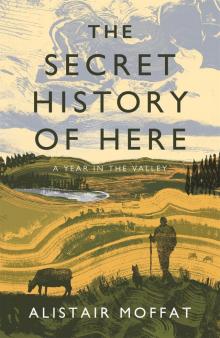 The Secret History of Here
The Secret History of Here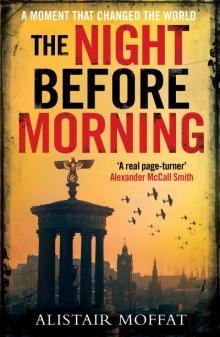 The Night Before Morning
The Night Before Morning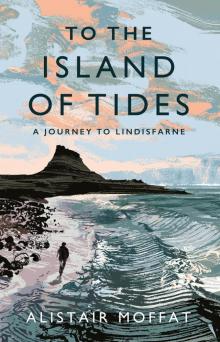 To the Island of Tides
To the Island of Tides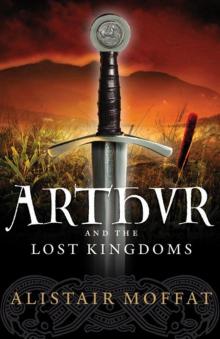 Arthur and the Lost Kingdoms
Arthur and the Lost Kingdoms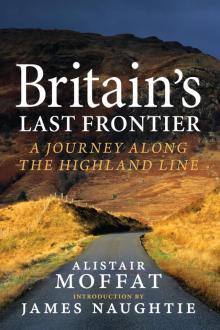 Britain’s Last Frontier
Britain’s Last Frontier The Faded Map: The Lost Kingdoms of Scotland
The Faded Map: The Lost Kingdoms of Scotland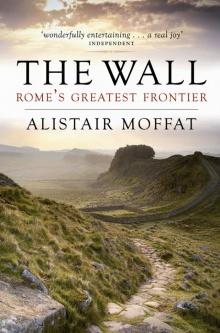 The Wall
The Wall